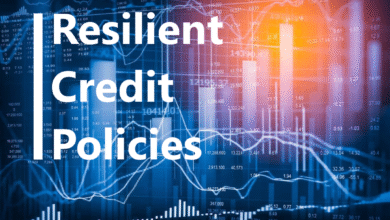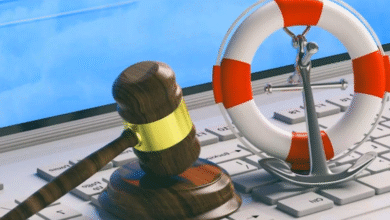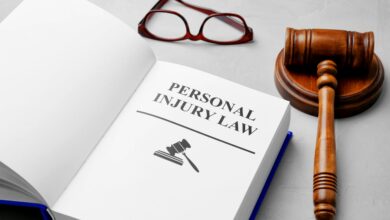Filing for Bankruptcy in California: Chapter 7 vs Chapter 13
Discover the key differences between Chapter 7 and Chapter 13 bankruptcy in California. Learn the process, eligibility, pros and cons, and legal tips when filing for bankruptcy.

Filing for bankruptcy is never an easy decision. It often comes after months—or even years—of financial struggle, mounting debt, and relentless creditor calls. For Californians dealing with unmanageable financial burdens, bankruptcy may offer a fresh start. However, choosing the right type—Chapter 7 vs. Chapter 13—is critical. This guide provides a comprehensive breakdown of filing for bankruptcy in California, comparing both chapters, their eligibility requirements, benefits, drawbacks, and long-term impacts.
Understanding Bankruptcy: A Lifeline for the Financially Distressed
Bankruptcy is a legal process designed to help individuals and businesses eliminate or repay debts under the protection of the federal bankruptcy court. In California, as elsewhere in the U.S., the two most common types for individuals are Chapter 7 and Chapter 13. Both are governed by the U.S. Bankruptcy Code and offer different forms of debt relief.
Whether you’re overwhelmed by medical bills, credit card debt, personal loans, or facing foreclosure, understanding your options is key to a successful filing for bankruptcy.
Chapter 7 Bankruptcy: Liquidation
What Is Chapter 7 Bankruptcy?
Chapter 7 bankruptcy, often referred to as “liquidation bankruptcy,” is the most common form of bankruptcy in California. It allows debtors to discharge most unsecured debts in a matter of months.
Eligibility for Chapter 7 in California
To qualify, you must pass the Means Test, which compares your income to the median income in California for your household size. If your income falls below the threshold, you’re typically eligible. If not, you may still qualify based on your disposable income after allowable expenses.
How Chapter 7 Works
- File Petition: The bankruptcy process begins by filing a petition in a California bankruptcy court.
- Automatic Stay: All collections, lawsuits, and wage garnishments are halted.
- Asset Liquidation: A trustee may sell non-exempt property to pay creditors.
- Debt Discharge: Most unsecured debts are wiped out within 3–6 months.
Debts Typically Discharged
- Credit card debt
- Medical bills
- Personal loans
- Utility bills
- Some old tax debts
Debts Not Discharged
- Student loans (in most cases)
- Child support/alimony
- Recent taxes
- Court fines and restitution
Chapter 13 Bankruptcy: Reorganization
What Is Chapter 13 Bankruptcy?
Chapter 13 is known as a “wage earner’s plan.” Unlike Chapter 7, it doesn’t require selling assets. Instead, it allows individuals with regular income to develop a 3-to-5-year repayment plan to pay off part or all of their debts.
Eligibility for Chapter 13 in California
- You must have stable income.
- Your secured debt must be under $1,395,875 and unsecured debt under $465,275 (as of 2025, subject to adjustments).
- You must file your tax returns for the previous four years.
How Chapter 13 Works
- Petition Filing: You submit your financial documents and proposed repayment plan.
- Automatic Stay: Like Chapter 7, it halts creditor actions.
- Plan Approval: Court approves the plan after a confirmation hearing.
- Repayment Period: You make monthly payments to a bankruptcy trustee.
- Debt Discharge: Remaining eligible debt is discharged after successful completion of the plan.
Benefits of Chapter 13
- Stops foreclosure and allows you to keep your home.
- Protects co-signers from collection actions.
- Allows repayment of non-dischargeable debts like taxes and child support.
Key Differences Between Chapter 7 and Chapter 13 Bankruptcy
| Feature | Chapter 7 | Chapter 13 |
|---|---|---|
| Purpose | Liquidation | Reorganization |
| Duration | 3–6 months | 3–5 years |
| Asset Liquidation | Yes (non-exempt assets) | No (repayment instead) |
| Income Requirement | Low income (means test) | Regular income |
| Home Foreclosure | May not stop foreclosure | Can stop and catch up on arrears |
| Debt Discharge | Most unsecured debts | Some unsecured debts after repayment |
| Impact on Credit | Stays for 10 years | Stays for 7 years |
California-Specific Bankruptcy Exemptions
California offers two sets of exemptions—System 1 and System 2. Debtors must choose one system when filing for bankruptcy, and each protects different types of assets:
Common Exemptions Include:
- Homestead Exemption (up to $678,391 as of 2025, depending on county and property value)
- Motor vehicle exemption (up to $7,500)
- Personal property (household items, clothing, etc.)
- Retirement accounts
- Wages and public benefits
The choice of exemption system may affect whether you retain your home, car, and other property when filing for bankruptcy.
When Should You File for Bankruptcy in California?
You might consider filing for bankruptcy if:
- Your debt-to-income ratio is too high to catch up on payments.
- Collection calls, lawsuits, or garnishments are ongoing.
- You’re at risk of foreclosure or vehicle repossession.
- You’ve tried debt consolidation or negotiation without success.
Filing can offer peace of mind, a financial reset, and a pathway to rebuilding your credit—when done correctly.
How to File for Bankruptcy in California: Step-by-Step
- Credit Counseling: Complete a mandatory counseling session from an approved agency.
- File Bankruptcy Petition: Includes detailed forms about your income, debts, expenses, and assets.
- Automatic Stay: Immediately stops all collection actions.
- Trustee Appointment: Court assigns a trustee to oversee your case.
- Meeting of Creditors (341 Meeting): Attend a hearing where creditors may ask questions.
- Financial Management Course: Must be completed before debts are discharged.
- Debt Discharge or Plan Completion: Your eligible debts are either discharged (Chapter 7) or after repayment (Chapter 13).
Pros and Cons of Filing for Bankruptcy
Pros:
- Immediate debt relief
- Stop foreclosure or repossession
- Legal protection from creditors
- Opportunity to rebuild credit
Cons:
- Negative impact on credit score
- Public record on your credit report
- May lose non-exempt assets
- Not all debts are dischargeable
Rebuilding Credit After Bankruptcy
Although filing for bankruptcy lowers your credit score initially, it also wipes out debt, offering a clean slate. Many individuals begin rebuilding their credit within months by:
- Applying for secured credit cards
- Making on-time payments
- Keeping debt-to-income ratio low
- Monitoring credit reports regularly
Do You Need a Bankruptcy Attorney in California?
While it’s possible to file on your own (pro se), working with a California bankruptcy attorney is highly recommended. A lawyer can help you:
- Choose the right chapter (Chapter 7 vs. Chapter 13)
- Avoid costly filing errors
- Maximize your exemptions
- Navigate complex court procedures
Bankruptcy law is intricate, and even a minor mistake can result in case dismissal or loss of property.
Alternatives to Bankruptcy
If you’re still on the fence about filing for bankruptcy, consider these options:
- Debt Consolidation: Combine multiple debts into one loan with lower interest.
- Debt Settlement: Negotiate reduced payments with creditors.
- Credit Counseling: Seek guidance from nonprofit agencies.
- Loan Modification: For mortgages, this can lower monthly payments.
These options may not offer the complete relief bankruptcy provides, but they can help depending on your financial situation.
Final Thoughts: Filing for Bankruptcy in California
Filing for bankruptcy in California is a serious decision, but it can be the first step toward financial freedom. Whether you’re considering Chapter 7 to eliminate debt quickly, or Chapter 13 to protect assets while repaying over time, it’s crucial to understand your rights, the process, and potential outcomes.
A thorough review of your income, debt, and long-term goals—ideally with professional legal advice—will help you choose the best path forward.











